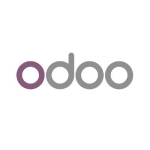I use the solution in my company to pay for procurement, finance, and asset management, and we use all its modules across the board for everything.
I think the tool is very good for large organizations, and to handle large volumes of data that is used while being user-friendly. The documentation and storage procedures and other things are clearly defined for end users.
There is a need to improve the migration process.
I think that clearer guidelines on implementation for faster data migration need to be improved a little bit, as transforming the legacies to SAP S/4HANA is complex. When there are business requirements, the business needs to work closely and understand that data migration and cutover activities need to be improved to meet the production goal.
I have been using SAP S/4HANA for more than five years.
Sometimes we have issues with the performance and other things, especially when you don't do proper testing and other things, or when you basically miss some of the cutover guidelines or steps in implementation and deployment, but we get good support from SAP.
It is a scalable solution.
I think if you go for public cloud, the solution's technical support is not great and I would rate it as a five out of ten. If you have a private cloud, I would rate the solution's technical support as a seven or eight out of ten.
The product's initial setup phase's complexity or easiness is something that depends on many factors. If you have a very good SI and, you don't need to look at the setup process. With ClamSAP and SAP Cloud ALM, things are a lot easier now. Compared to old days when we used to use SAP Solution Manager 7.2, things have become a lot easier now with SAP S/4HANA and every year it is being improved.
Deployment is like a thorough cutover activity that needs to be studied. Data migration, configuration, code, and everything need to be cross-checked or double-checked, and some kind of production verification or technical verification needs to be done at every stage before moving to the next one, making it fairly complex and there are a lot of people involved in it. The aforementioned areas can be considered as the downsides of the tool when compared to Salesforce and other applications. SAP S/4HANA handles large volumes of data when compared to other applications.
The solution is deployed on private cloud, public cloud, and on-premises.
With ClamSAP and fast-track implementation guides, you can implement the tool in three months.
The tool's ROI is pretty good, but it takes a long time to see any returns on the investment. SAP systems are implemented to last, like, maybe twenty, thirty years. The ROI will come back, but you won't see any benefits in the near future after its purchase. It is a long-term solution that you implement and move forward for twenty or thirty years, and I think the return on investment is good. If you're going into SAP S/4HANA, it is not like there is a need to bring in the whole suite for your whole business and more on to SAP S/4HANA. The ROI is good.
It is an expensive solution. The tool's price can be reasonable for large organizations, but it might not be suitable for small organizations with a small number of users.
In supply chain management, my company looks into MRP, forecasting, stock forecasting, and everything, and then the management, specifically invoice management, for processing payments.
In the finance and accounting aspect, the tool does end-to-end accounting, budget planning, and forecasting. The tool also does postings, Cl. balance, reconciliation, and all that sort of stuff.
The tool has improved the efficiency of the business processes, and I think it provides the best in-built practices as a solution, readily available, and it can be easily customized to suit your business. Everything, like the end-to-end processes, are all predefined, and the best practice for the solution is available in the product during the setup, which is really useful.
With the tool, you have real-time data and time reports. It is not like it was in the past when it was in-memory, as it used to take longer to generate the reports. Now, it provides reports in real-time, so it is really good.
Real-time insights have impacted the decision-making processes since, I think, we will know when customer orders are coming in, and we can see the demand go up pretty quickly. In real-time, the management can make decisions about reordering, manufacturing, and production planning, which is a lot on a dashboard where it is tightly integrated and helpful in many areas.
For the migration process, there is a learning curve. The end users may have to be trained. The migration process has a lot of paperwork and manual activity that has become redundant, which is good and bad since the learning curve is now a bit high. People who are near to the system need to be trained, which is a bit of a downside, but in the long run, it is okay.
I suggest the tool to large organizations, complex businesses, multiple companies, or entities with hundreds and thousands of users and employees, as it would be good in such environments. In small organizations, I wouldn't suggest SAP S/4HANA.
As maintaining and changing the tool is very costly, I rate the solution a seven out of ten.


















